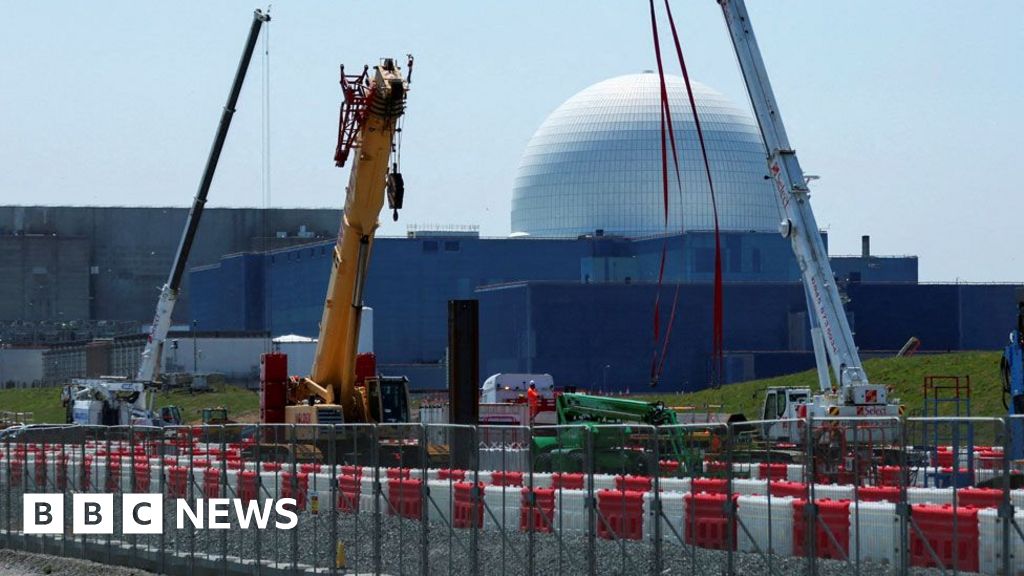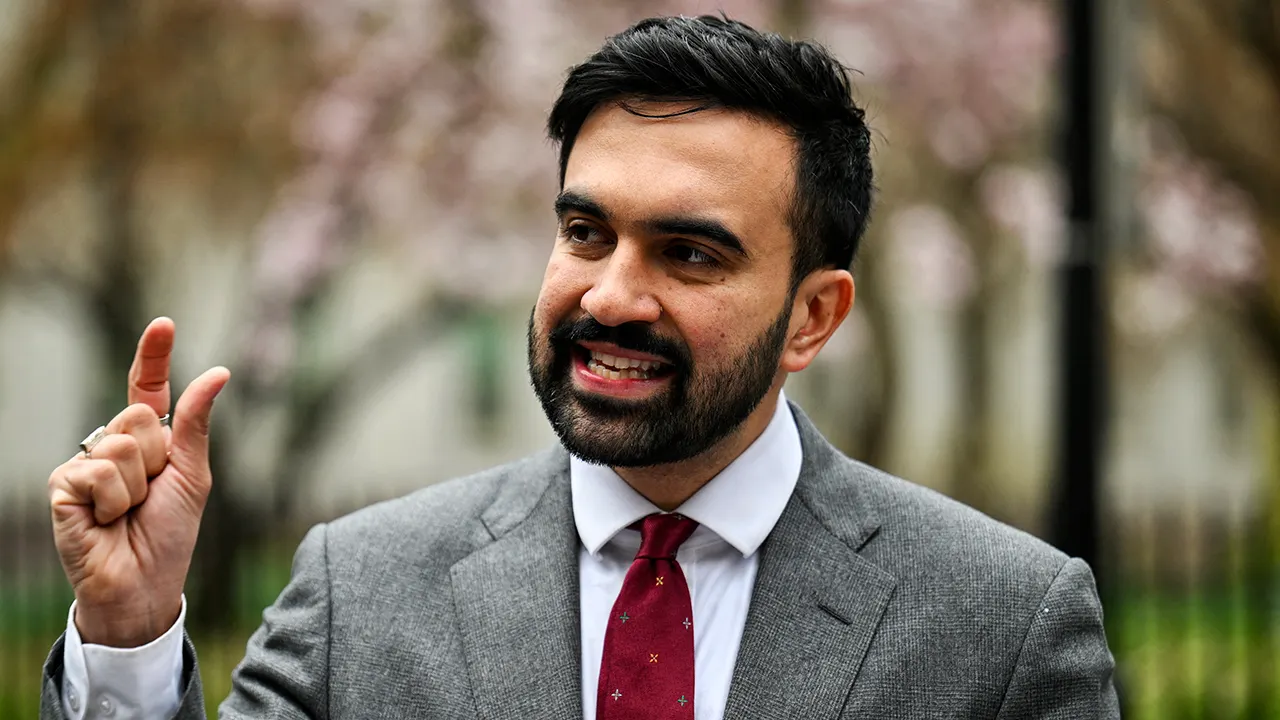BBC News, Suffolk
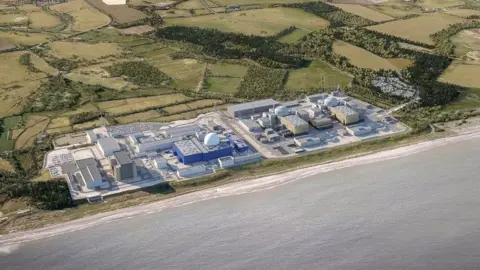 Sizewell C
Sizewell CThe cost of building the Sizewell C nuclear power plant has jumped to £38bn, adding £1 a month to household energy bills for about a decade.
The previous official figure for the project was £20bn, but the plant’s joint managing director Julia Pyke said earlier estimates did not account for inflation or risk.
The government confirmed on Tuesday that it would take a stake in the power plant, and announced that it had secured investment from a number of businesses, including British Gas-owner Centrica.
The Sizewell C reactor is expected to begin operating in the mid to late 2030s, said Ms Pyke, after which she said home energy bills will be £2bn lower.
Ms Pyke said the nuclear plant would “cost consumers about a pound a month during the construction phase,” adding up to a “small annual charge”.
The government’s stake in the project is 44.9%, while Centrica, EDF, La Caisse and Amber Infrastructure will also have holdings in exchange for funding.
Alison Downes, director of pressure group Stop Sizewell C, said: “This much-delayed final investment decision has only crawled over the line thanks to guarantees that the public purse, not private investors, will carry the can for the inevitable cost overruns.”
Ms Downs added she expected UK households to be hit with a new Sizewell C construction tax on their energy bills.
“It is astounding that it is only now, as contracts are being “signed, that the government has confessed that Sizewell C’s cost has almost doubled to an eye watering £38 billion – a figure that will only go up,” she said.
Sizewell C is expected to create 10,000 direct jobs, thousands more in firms supplying the plant and generate enough energy to power six million homes, the Treasury said.
Energy Secretary Ed Miliband said: “It is time to do big things and build big projects in this country again and today we announce an investment that will provide clean, homegrown power to millions of homes for generations to come.
“This government is making the investment needed to deliver a new golden age of nuclear, so we can end delays and free us from the ravages of the global fossil fuel markets to bring bills down for good.”
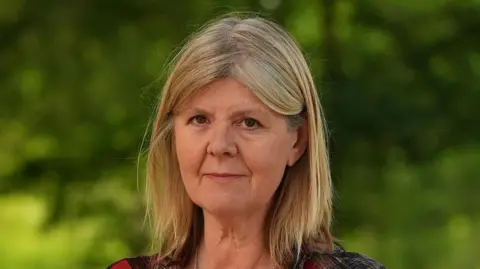 Martin Giles/BBC
Martin Giles/BBCThe government’s National Wealth Fund – its principal investor and policy bank – will be making its first investment in nuclear energy.
Ownership of the plant will see La Caisse take a 20% stake, Centrica will have 15% and Amber Infrastructure an initial 7.6%.
This comes alongside French energy giant EDF taking a 12.5 % stake in the project, set out earlier this month, as well as a proposed £5bn debt guarantee from France’s export credit agency, Bpifrance Assurance Export, to back the company’s commercial bank loans.
Ms Pyke said: “By investing in Sizewell C, they [the government] are laying the foundations for a more secure, cleaner and more affordable energy system.
“Because 70% of our construction spend will be in the UK, with a £4.4bn commitment to the east of England, they will also help to create thousands of great jobs and new opportunities for people and businesses up and down the country.”
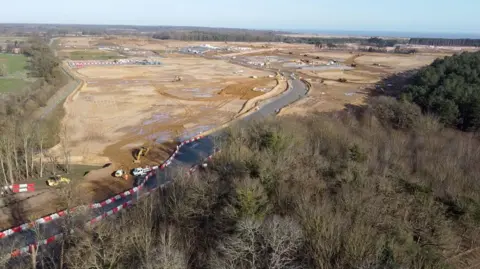 Jamie Niblock/BBC
Jamie Niblock/BBCDespite the UK’s strong nuclear legacy, including opening the world’s first commercial nuclear power station in the 1950s, no new nuclear plant has opened in the UK since 1995, with all of the existing fleet except Sizewell B likely to be phased out by the early 2030s.
Sizewell C was one of eight sites identified in 2009 by then-Energy Secretary Ed Miliband as a potential site for new nuclear. However, the project was not fully funded in the 14 years that followed under subsequent governments.

Get our flagship newsletter with all the headlines you need to start the day. Sign up here.



